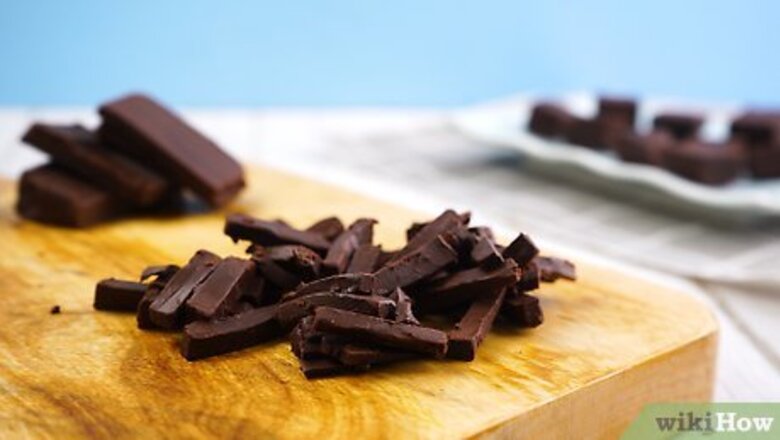
views
Tempering by Adding Chocolate Solids (Seeding)
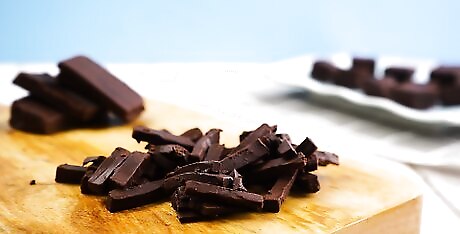
Gather your equipment, and preferably one to two pounds of chocolate. Chop your chocolate into small pieces, or use chocolate disks, sold by many manufacturers at gourmet stores or online from professional chocolate suppliers. The more chocolate you use, the easier the process is to manage. Try to chop your chocolate as uniform as possible. Chocolate that's uniformly chopped will melt evenly and lower the risk of scorching. If you want, you can use a serrated knife to cut the chocolate into even chunks, or you can look for chocolate chips that are evenly molded. Set aside approximately 1/3 of the chopped chocolate for later use. It will not be used in the initial double-boiling.
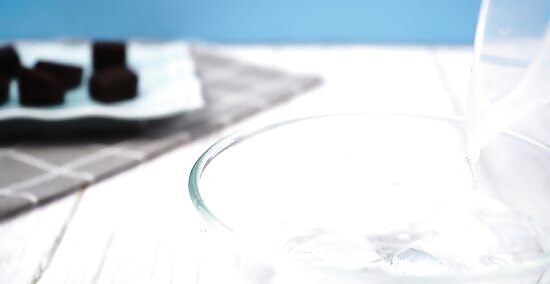
Fill one of your bowls with ice water. Fill it just full enough so that your other bowl — your bowl with chocolate — will rest nicely inside without spilling the water.
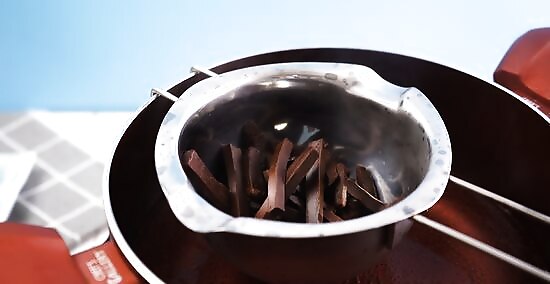
Place your chopped chocolate in the dry, stainless steel bowl. Melt it gently over a pot of very gently simmering water by resting the bowl on the top of the pot of water. The bowl should be bigger than the pot and should not be submerged in the water, but resting on the edge of the pot. Do not bring the water underneath the chocolate to a boil. Also, don't rush the melting by turning up the heat on the stove. Trying to melt the chocolate too soon will cause it to scorch, ruining the taste and the tempering process. Be careful not to allow any water to get in the chocolate, or it will seize. This is very important.
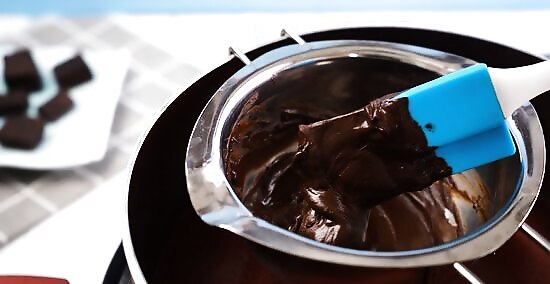
Heat the chocolate slowly until it reaches a temperature of 110°–115°F. Once the chocolate is fully melted it should feel warm to the touch. Place the bowl of melted chocolate into the bowl with ice water, and begin to stir slowly but constantly. Once it begins to thicken and reaches a temperature of 95°–100°F, crystallization or "tempering" is occurring, and you can remove it from the cold water.
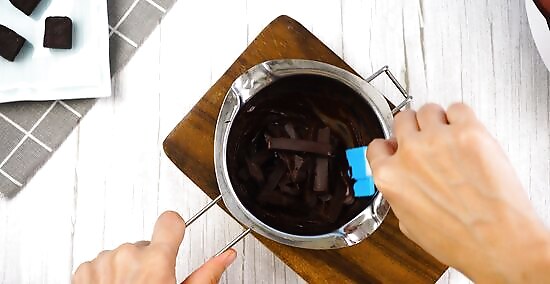
Add the remaining 1/3 of untempered chocolate to the melted chocolate and stir. Incorporate the two forms of chocolate so that the final mixture is smooth.
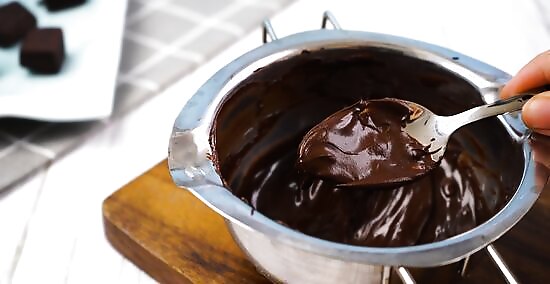
Start test for temper or crystallization at 90°F by dipping a spoon into the chocolate. It should set up a hard, firm, and shiny with 2 to 3 minutes, in a 65°-72°F environment. If it appears spotty or dull, you need to continue stirring, applying heat or cold as necessary to keep it soft and workable, but not too thin. It should feel cool to the touch; a good test spot for temperature is to place a dot on your lower lip. If it feels cool, the temperature is probably about right.
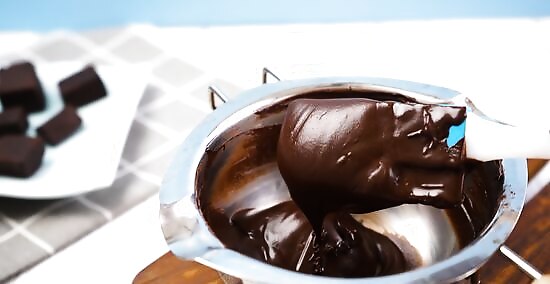
Check for tempering. When the chocolate sets quickly, uniformly, with good shine and no spots, it is ready to use. You can fill molds, make bark, dip dried fruits, biscuits, cookies, or anything else with it. You can flavor it with fat-soluble oils (mint, lemon, orange, etc.) as well.
Tempering by Tabling
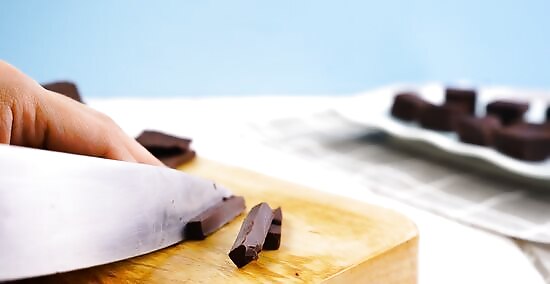
Gather and chop your chocolate into even pieces. A serrated knife works well here, although you can skip the cutting altogether if you decide to buy chocolate chips or coins. Set aside approximately 1/3 of the chopped chocolate for later use. It will not be used in the initial double-boiling.
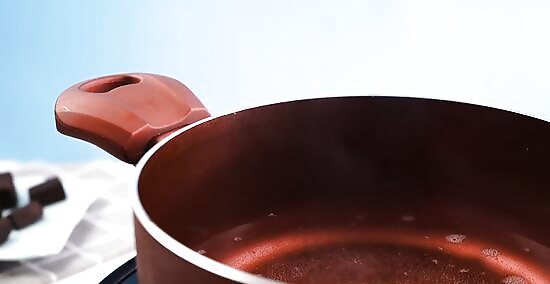
Heat up a pot of water, but do not bring it to boil. You want steam to be coming from the pot, but boiling water can cause the chocolate to scorch or melt too quickly.
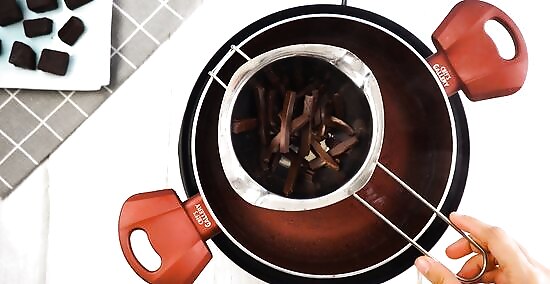
Place the chocolate pieces in a completely dry, stainless steel bowl, and then onto the steaming pan. Make sure the bowl with the chocolate rests on top of the pan, keeping any moisture or water away from the chocolate. Water that is introduced to chocolate can cause it to seize.
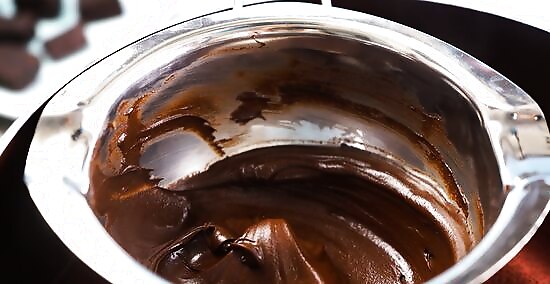
Melt the chocolate, stirring until it is just at 110°F. Do not melt beyond this point or the chocolate will scorch.
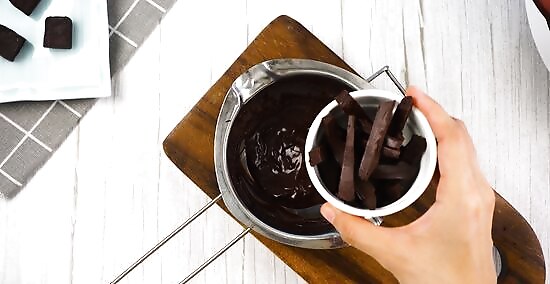
Introduce the remaining 1/3 solid chocolate into melted chocolate and continue stirring. Heat until the mixture becomes smooth again.
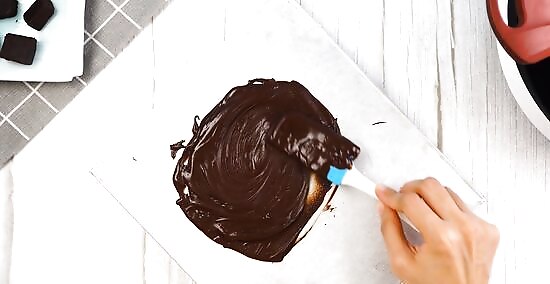
Begin "tabling" the chocolate on a smooth, cool surface such as marble. Take the chocolate off the heat and spread 2/3 of it over a cool surface. Next: With a spatula, work the melted chocolate by scraping and stirring it across the cool surface. This process will smooth and cool the chocolate. Continue tabling until a temperature of 80°–82°F is reached. Return the cooled mixture to the reserved mixture and put the whole mixture on top of the light heat again.
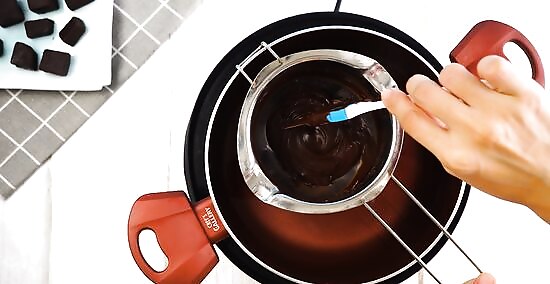
Stirring constantly, wait until the chocolate gets to a temperature of 87°–91°F. Take the chocolate off the double boiler. Use the chocolate in molds, biscuits, cookies, dipping, etc. Is the chocolate sticky to the touch even after a little while? Sticky chocolate has not been properly tempered. The chocolate should set and be firm after 2 to 3 minutes.
Understanding the Numbers
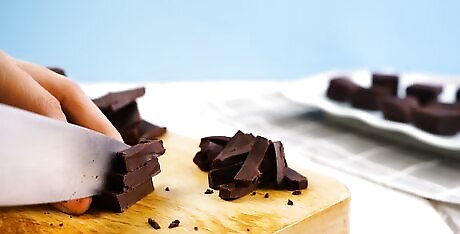
Mind a note on different types of chocolate. Different kinds of chocolates have different kinds of cacao concentrations, as well as cocoa butter concentrations. Knowing which type of chocolate you're working with is essential to tempering correctly. Dark chocolate (no milk content) tempers ideally at 88-90°F (31-32°C) Milk chocolate tempers ideally at 86-88°F (30-31°C) White chocolate tempers ideally at 80-82°F (27-28°C)
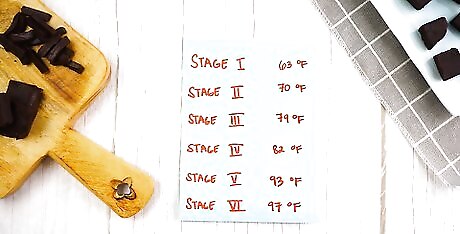
Know how the fats in cocoa butter crystalize. There are several different stages to the crystallization of cocoa butter fats. Melting and tempering good chocolate is all about getting the crystals to stage V of the process: Stage I — 17 °C (63 °F) — Chocolate is soft, crumbly, and melts too easily Stage II — 21 °C (70 °F) — Chocolate is soft, crumbly, and melts too easily Stage III — 26 °C (79 °F) — Chocolate is firm, snaps poorly, and melts too easily Stage IV — 28 °C (82 °F) — Chocolate is firm, snaps well, but melts too easily Stage V — 34 °C (93 °F) — Chocolate is glossy, firm, snaps well, and melts near body temperature Stage VI — 36 °C (97 °F) — Chocolate is hard and takes too long to form












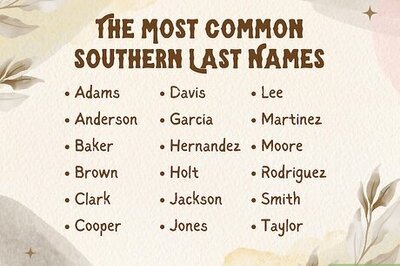







Comments
0 comment